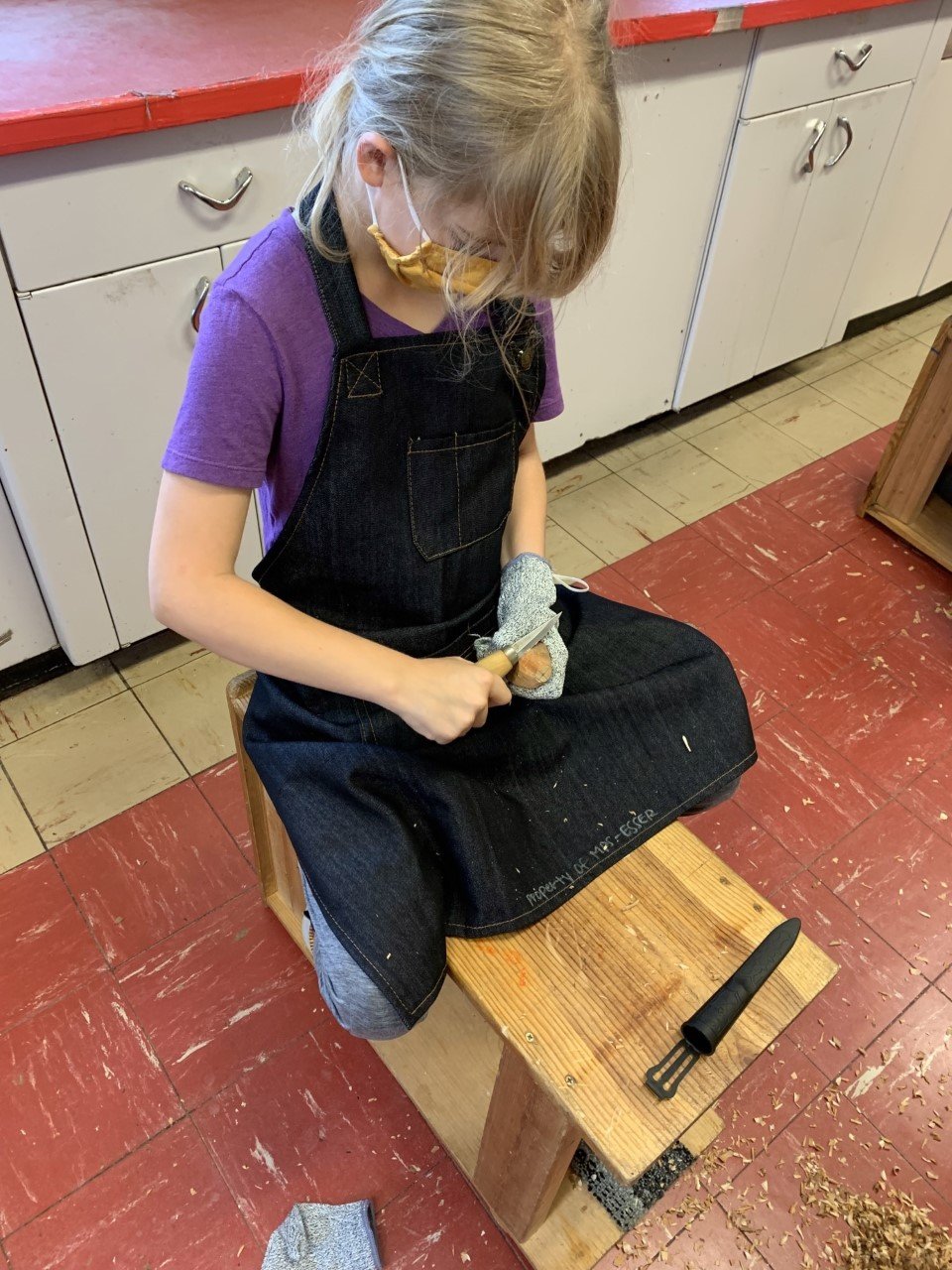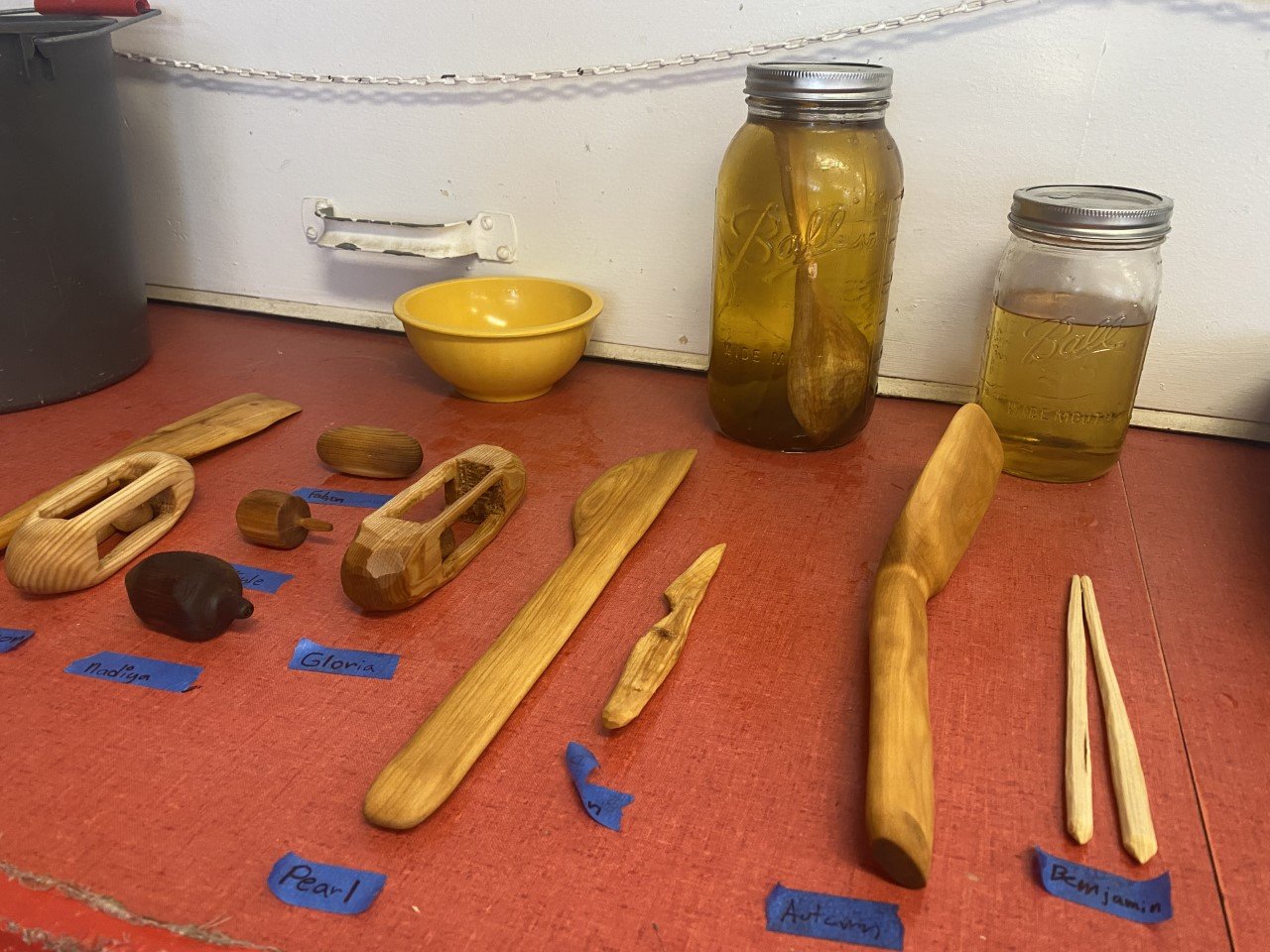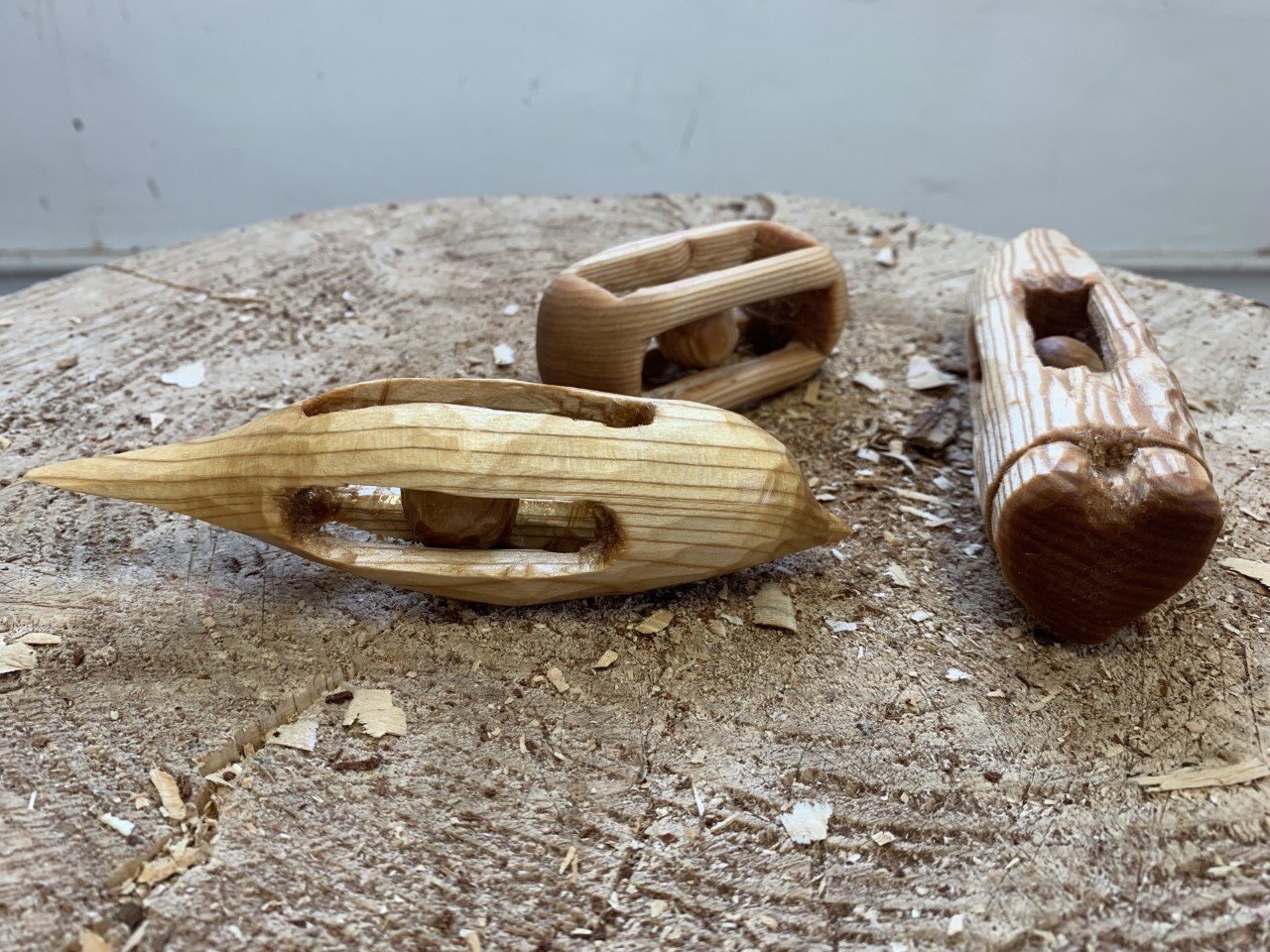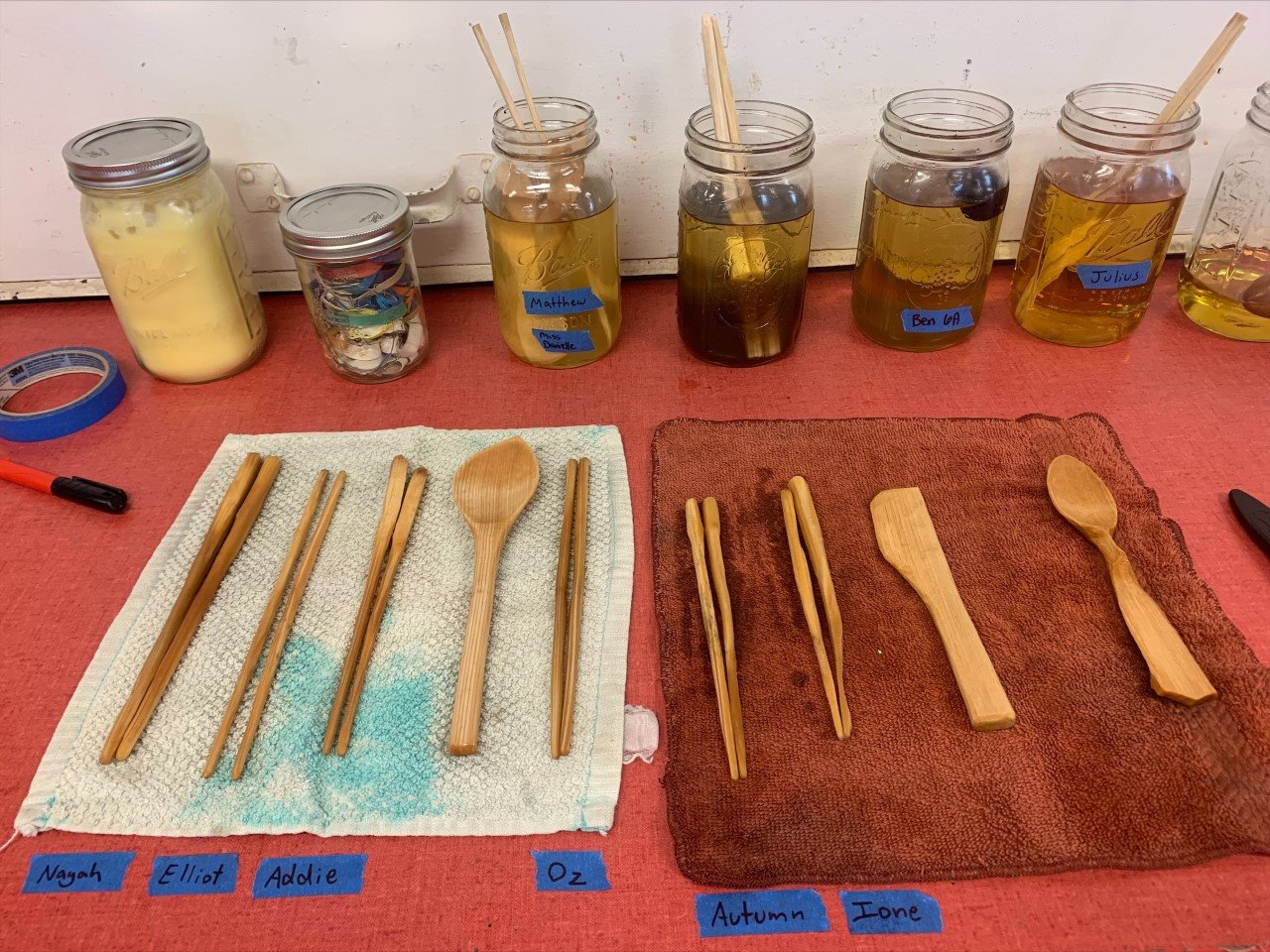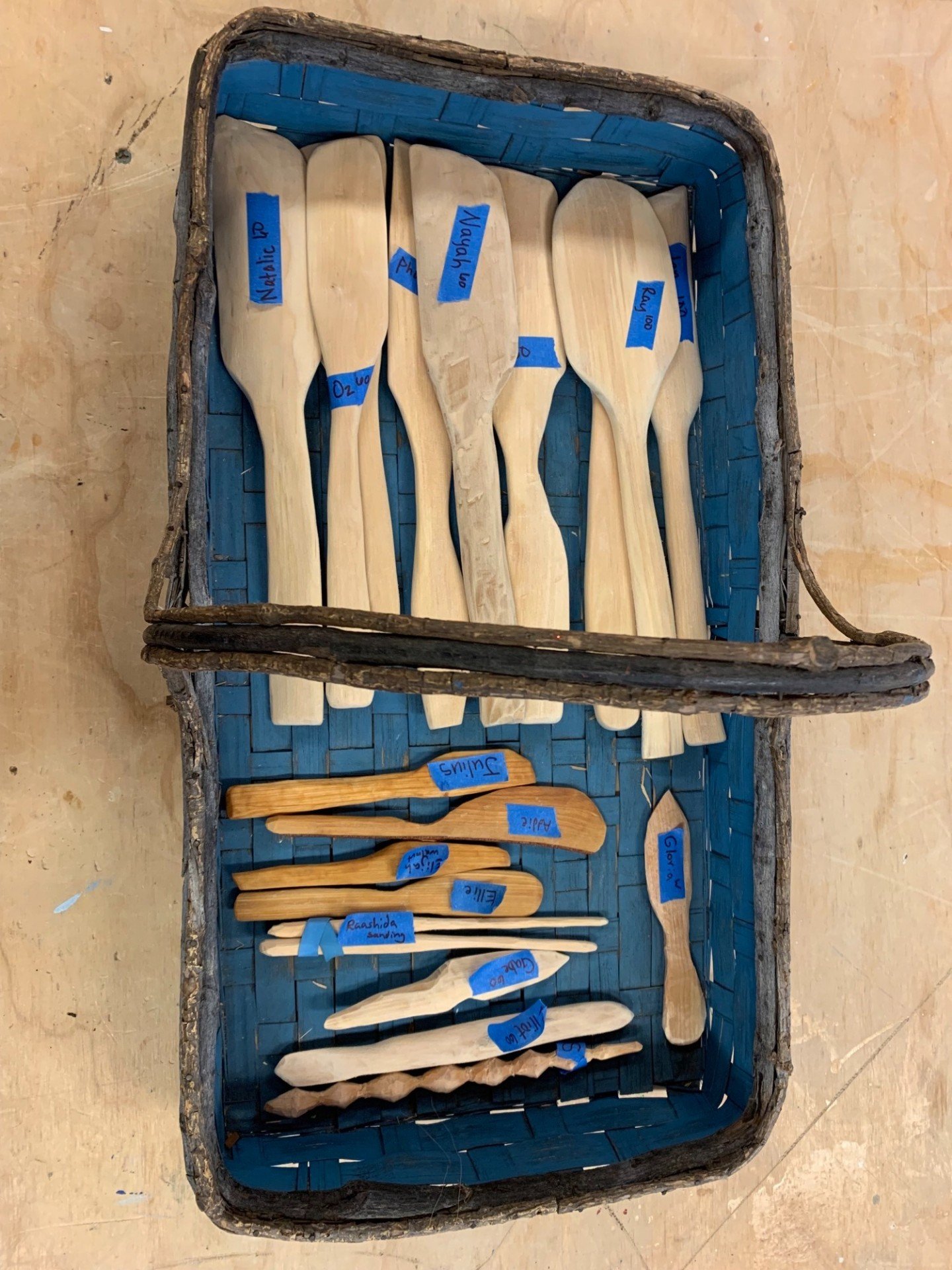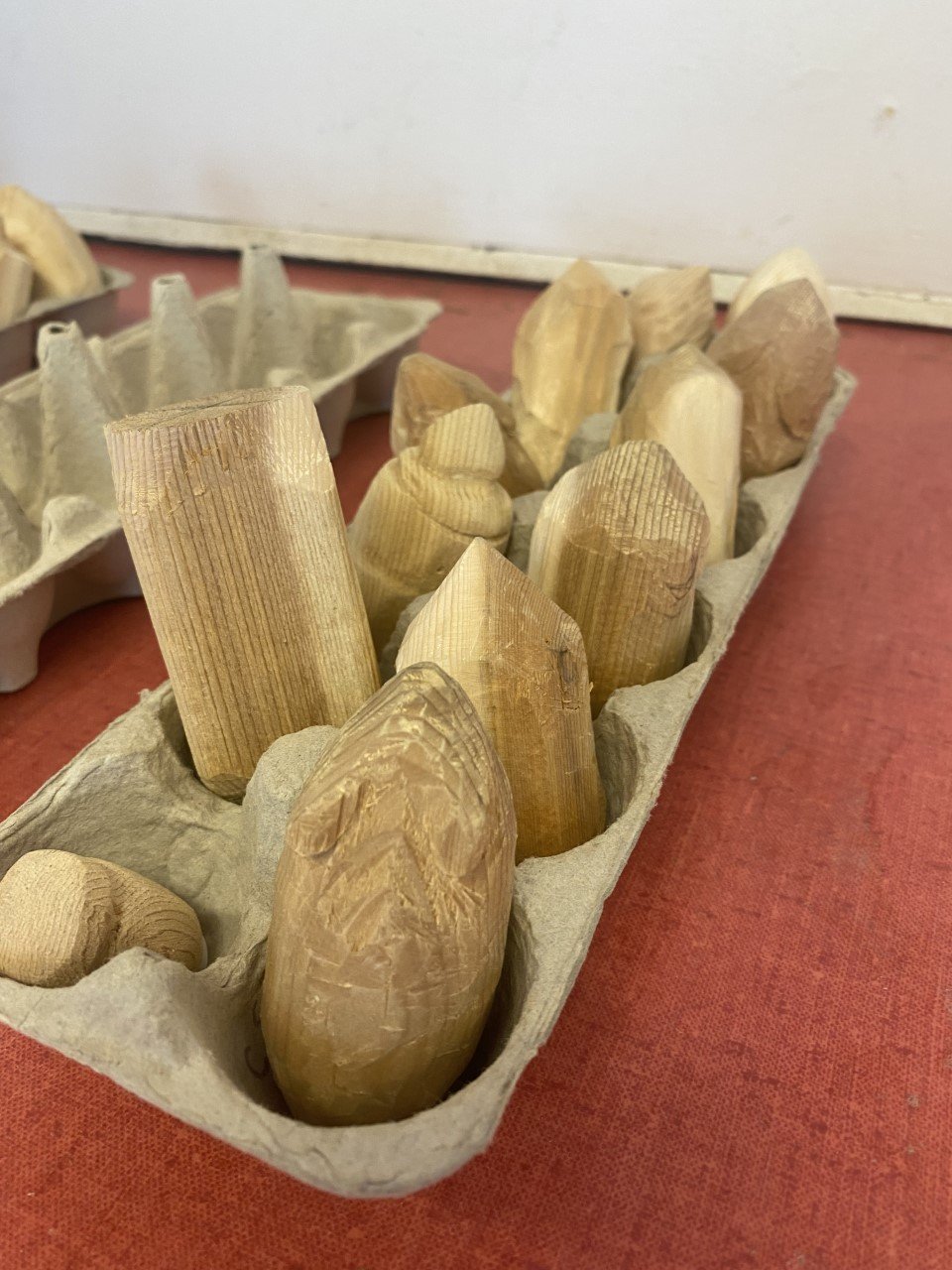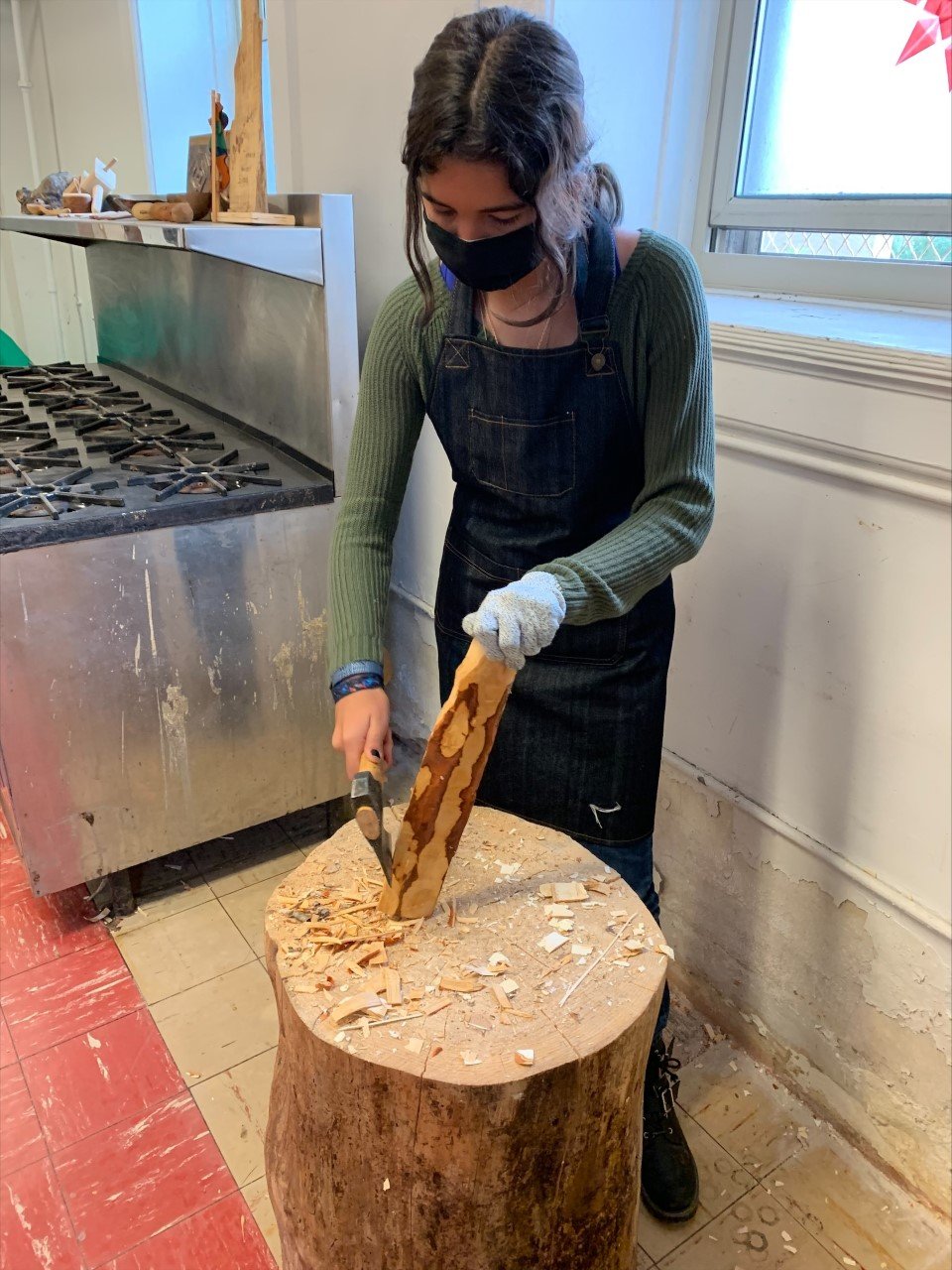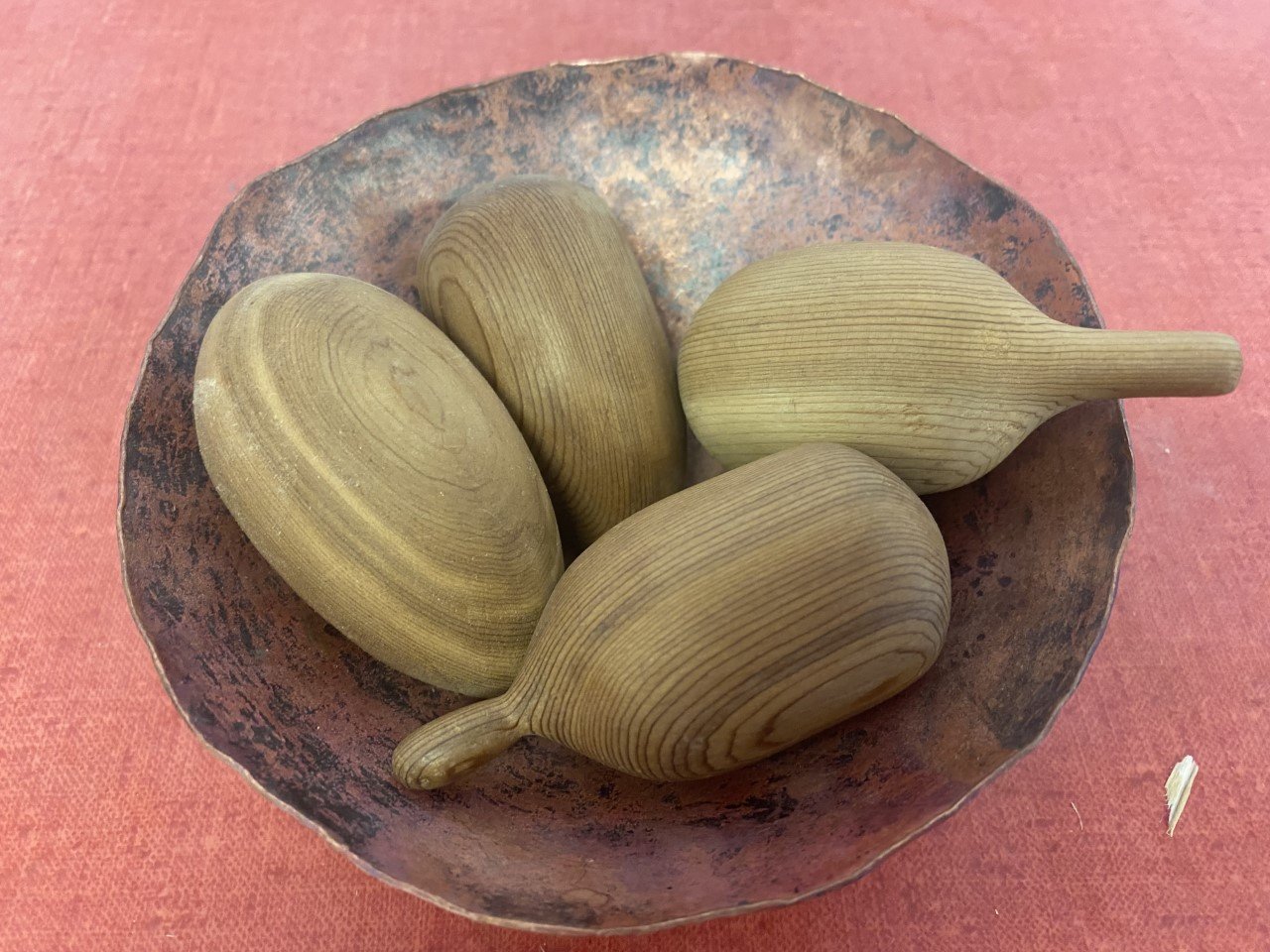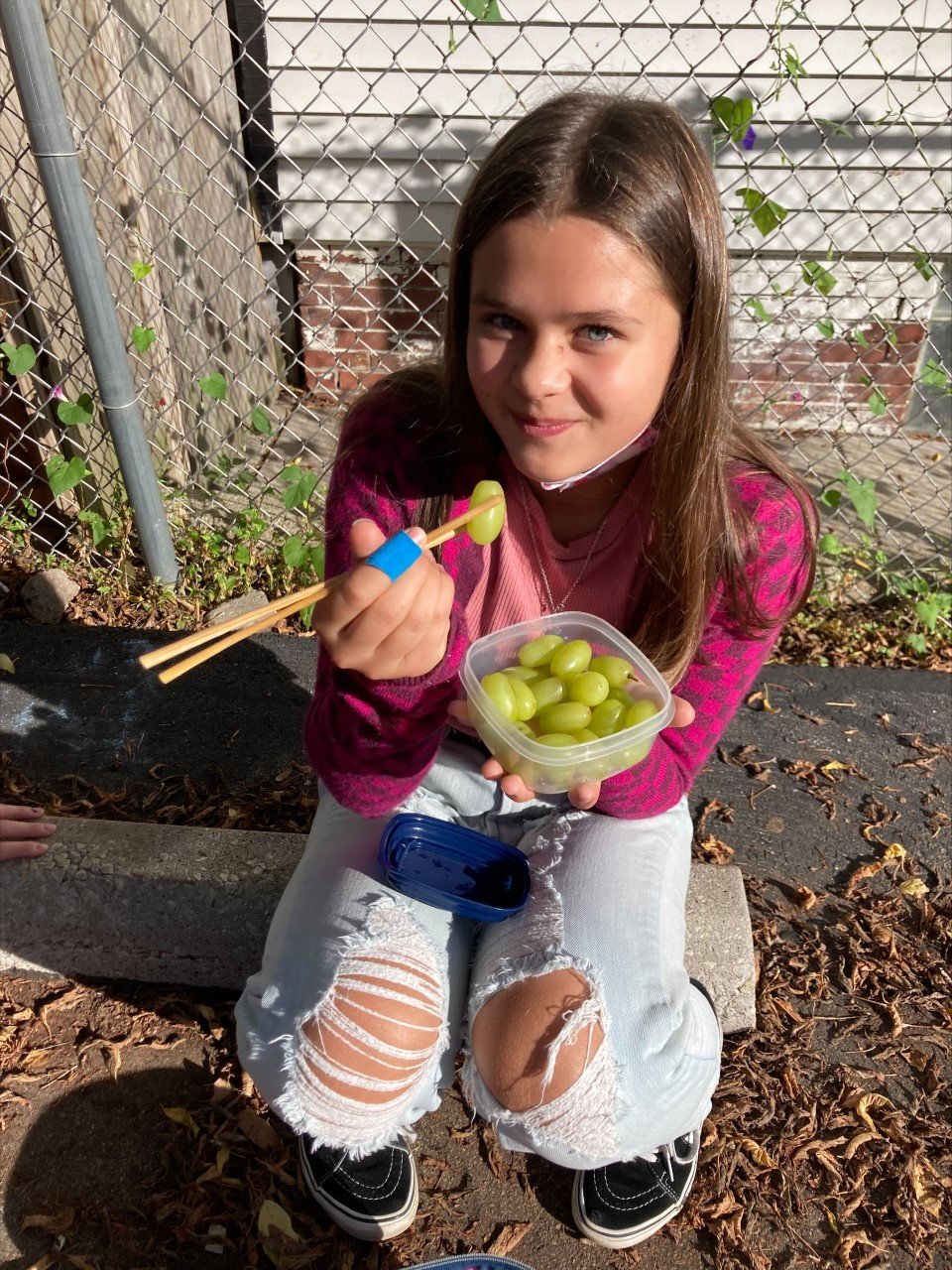Woodworking at Tamarack
Tamarack’s Woodworking Overview by Eliza Klunk
Woodworking is traditionally a part of the Applied Arts program in many Waldorf schools, including at Tamarack. The type of woodworking that we do here is based on the use of hand tools. Students use saws, axes, carving knives, chisels and gouges to create many beautiful and useful objects - the definition of Applied Arts. This type of work is therapeutic in nature, and gives students an opportunity to exercise their will and patience, as well as to strengthen and hone dexterity in their hands.
Woodwork starts in fifth grade at Tamarack, and the first project each student works on is an egg, traditionally used as a darning egg. From here students progress through carving spinning tops and then mice, a project which introduces some new cutting techniques. In sixth grade students work on carving chopsticks, the first in a series of kitchen implements and a deceptively difficult project! Carving chopsticks challenges the students to use their carving knife to create straight lines and tapers, and to refine their knife skills to create smooth surfaces, as this is the first project they are not allowed to sand.
There are a number of projects in the woodworking curriculum that students aren’t allowed to sand, including chopsticks, butter spreaders and spoons. The reason for this is twofold: when projects are finished with a blade as opposed to with sandpaper, students need to refine their knife skills to create smooth surfaces and they need to pay close attention to the grain of the wood. Projects that are finished with sandpaper, while they can be silky smooth and lovely to touch, don’t require as much precision with the knife. A knife finish can be equally lovely and is created by the blade compressing the wood fibers as opposed to grinding or filing them down, which is essentially what sandpaper does. When working with the knife, students have to evaluate the directionality of the wood grain and carve with it - in a way, they have to listen to what the wood is telling them. It also takes a lot of patience and precision to create a really fine finish with a blade, which exercises the students’ will.
Some students embrace the opportunity to finish projects without sanding them, as many students find sanding to be tedious and enjoy the challenge of working with only a blade. Other students, who prefer being able to obtain that silky smooth texture on their projects or who just enjoy the rhythmic and meditative aspects of sanding, miss it and are happy to be told that they are allowed to sand their second pair of chopsticks, butter spreader or spoon. Whether students are sanders or knife-finishers, they are all pushed to stretch their creative capacities and hone their skill and dexterity with hand tools.
ELIZA KLUNK
Teacher, Woodwork/Applied Arts, Handwork Assistant
Ms. Eliza grew up in and around the Milwaukee area. She first came to Tamarack as a parent and volunteer. In addition to handwork and woodwork, she enjoys reading, baking, board games, hiking, biking, camping and movies.




